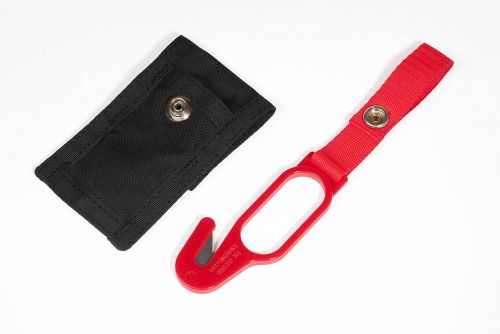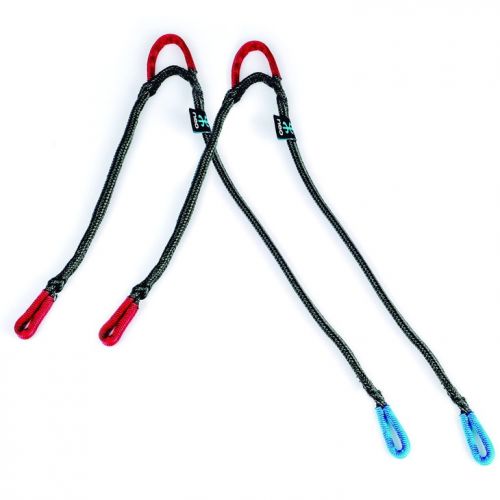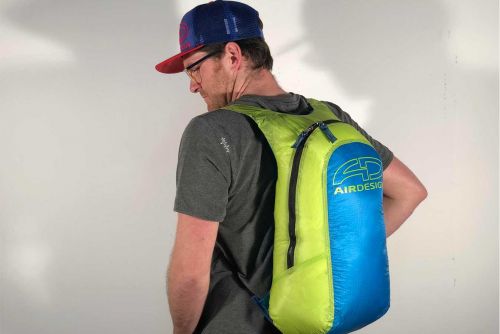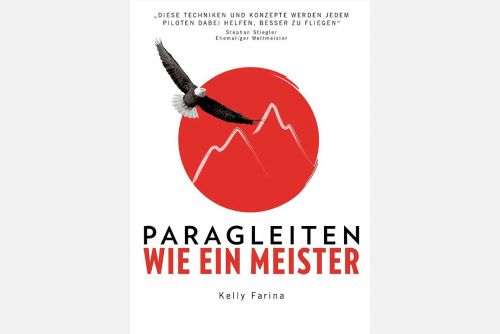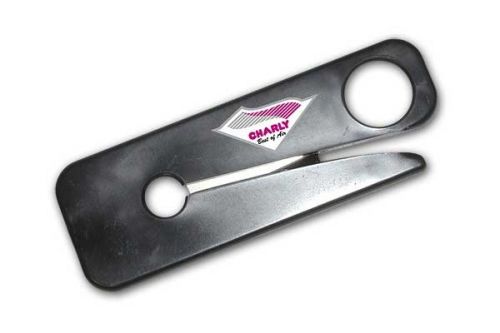Kortel T-BONE LINKS are flexible, ultra-lightweight links made from Dyneema. With only 10 g/piece and a strength of more than 2400 DaN, their strength-to-weight ratio is excellent. Kortel T-BONE LINKS are also fatigue-resistant, durable and, thanks to the integration of the innovative "Kortel Konnect" quick link, they are much easier and safer to handle than conventional soft links.
The Kortel T-BONE LINKS are suitable for all types of connections, especially as a carabiner replacement in paraglider harnesses or for attaching the rescue system to the harness.
Weight: 10 g/piece
Recommended replacement interval: 5 years for frequent use as a paragliding carabiner, 10 years for use as a connecting link for rescue systems (protected from light inside the harness)
5 reasons why the paraglider should be disconnected after an emergency parachute deployment
- According to the LTF, the maximum allowed sink rate for paraglider rescue systems is 6.8 m/s, corresponding to 24.5 km/h. However, many pilots are not aware that in the reserve parachute certification process, the sink rate is determined without the paraglider. Interactions between paraglider and rescue system can increase the sink rate substantially – for example, by increased swinging or due to a resulting shear position. The risk of injury increases accordingly.
- Although modern reserve parachutes usually reach maximum sink rates of “only” 5.5 m/s, corresponding to approx. 20 km/h, these values are often only achieved by a lateral drift that generates lift. A paraglider that is not separated or only separated on one side impedes this drift and thus substantially increases the sink rate.
- The possibility to choose the landing site with a steerable rescue system is a significant safety plus. If the main glider is not separated, this safety advantage is foregone.
- It has shown that a separated paraglider usually collapses very quickly and that its salvage is easier. In the case of a tree landing, there is also a much lower risk of damage to the glider when it does not carry the full pilot weight.
- Video of a downplane situation of the paraglider after an emergency parachute deployment
Easy attachment to almost all paraglider harnesses
The V-shaped belt chamber for the harness is designed to correspond to the pulling directions of the main risers and the back strap.
In some pod harnesses, the pod is attached separately (e.g. in the Advance Impress 4). The pod loops can be inserted above the harness chamber separating screw.
Overview of the Finsterwalder PARALOCK's most important features
- Titanal drop forged
- Axle and locking bolt made of hardened chrome steel
- Replacement interval: 8 years with unlimited flight hours, 5 years for tandem paragliding use and use in hang gliders
- Weight: 73 g at a breaking load of 2.800 DaN*
* 1 DaN (Dekanewton) = 10 Newton ≈ 1 kg

